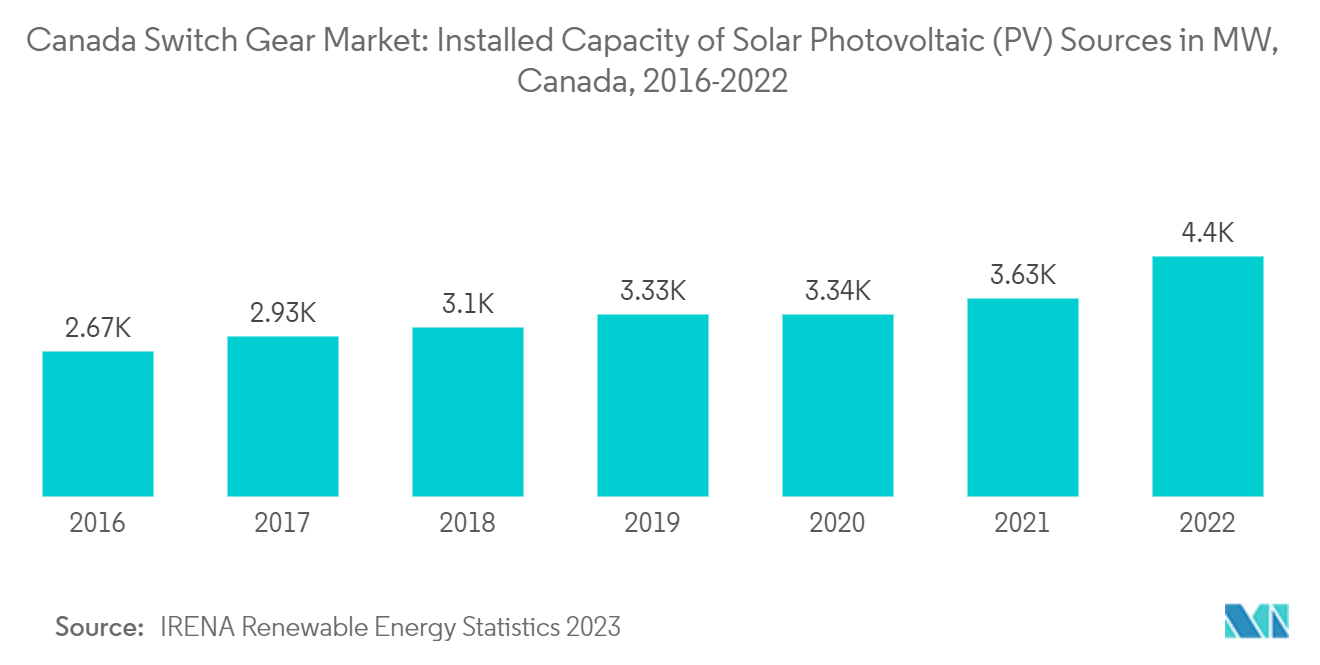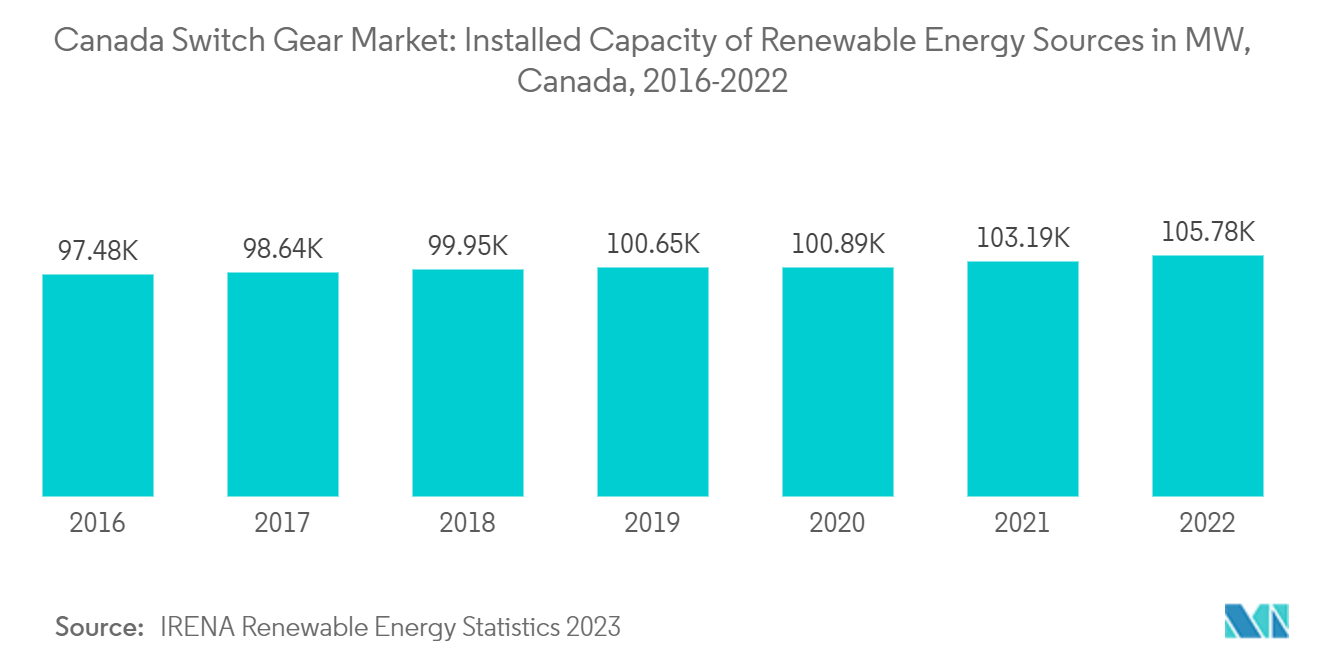Market Trends of Canada Switch Gear Industry
High Voltage Switchgear to Grow at Significant Pace
The high-voltage switchgear segment is likely to grow significantly during the forecast period. High-voltage switchgear is popular in the market, comprising components like disconnectors and circuit breakers. They are commonly used in city buildings, office spaces, offshore platforms, extensions, roofs, etc.
High voltage switchgear is divided into two types, namely gas-insulated switchgear (GIS) and air-insulated switchgear (AIS) (AIS). GIS is widely used in power transmission, railways, and integrating renewable energy-producing units into the grid.
The demand for high-voltage switchgear is expected to be propelled by the country's potential to integrate renewable power generation units into the grid. For instance, according to the government of Canada, the country's grid could derive 90% of its electricity from renewables by 2030.
In 2022, solar power capacity in Canada reached over 4.4 GW. Between 2010 and 2022, cumulative installed solar capacity increased yearly, reaching a peak in the latter year. Sol-Luce Kingston and Grand Renewable Energy Park are the two largest solar farms in Canada, with a capacity of 100 MW each.
Furthermore, the country's infrastructure Bank's Growth plan invests around USD 2 billion in energy efficiency retrofits for large-scale buildings. This investment will further boost the demand for switchgear in such retrofits nationwide. In addition, the rising installation of solar infrastructure over buildings, homes, etc., increases the further inattention to switchgear. In 2022, the government had 4.4 GW of installed solar PV capacity.
The major factors driving the growth are the rising energy demand and the extension/replacement of old switchgear at sub-stations. Due to its space optimization, low maintenance, and protection against external elements, the need for switchgear is expected to rise during the forecast period in Canada.

Rising Renewable Sources of Energy Generation
The government in the country is implementing reforms to foster the security of supply, including a retailer reliability obligation, adjustments to system operation, and planning for market design post-2025 at higher levels of variable renewables. This is expected to propel the demand for switchgear during the forecast period.
The government of Canada has targeted to reduce carbon emissions by 40-45% by 2050, according to the Government of Canada. The government of Canada has launched a USD 8 billion Net-Zero Accelerator Fund to help reduce their emissions.
For instance, Algoma Steel Inc. has received up to USD 420 million from the Fund to retrofit its operations and phase out coal-fired steelmaking processes at its facility in Ontario. The primary strategy of the government to reduce carbon emissions is increasing the share of renewable energy generation in the energy mix.
In 2022, Canada generated about 105 GW of electricity from renewable sources. That year, renewable sources accounted for nearly 68 percent of Canada's electricity generation.
Further, the solar photovoltaic (PV) module installation across the country increased. According to Canadian Renewable Energy Association (CanREA), the government had an installed capacity of more than 19 GW of utility-scale wind and solar energy. Such development is expected to boost the demand for switchgear in the market during the forecast period.
Moreover, the country's government has planned to increase the renewable energy share in the energy mix. It has been announced that the country will generate around 90% of its electricity from cleaner sources by 2030. Such initiatives taken by the government to achieve carbon neutrality further boost the demand for the market.


